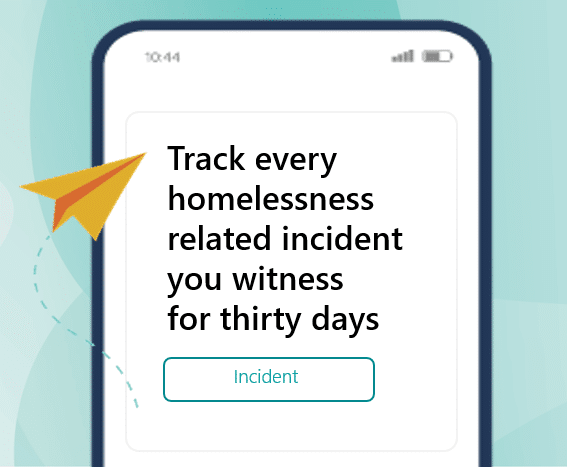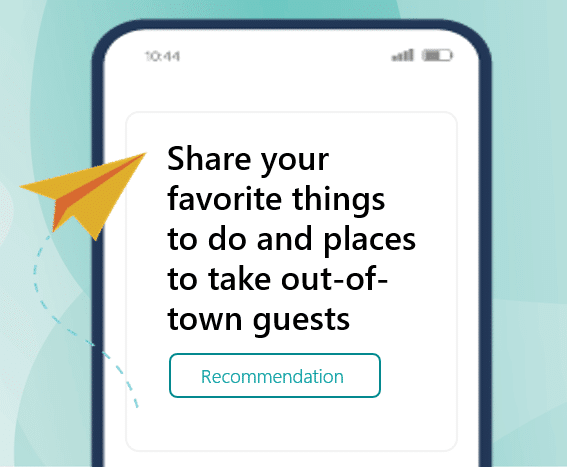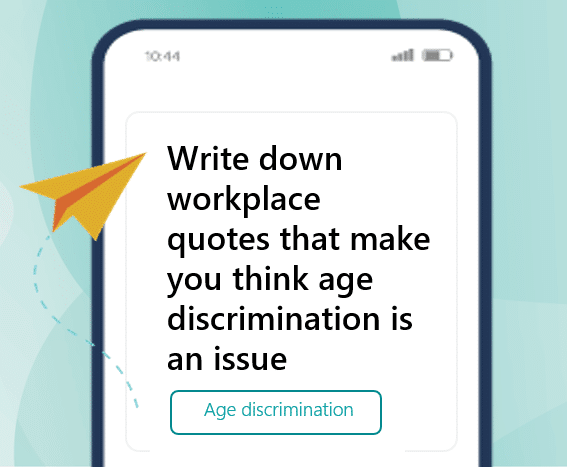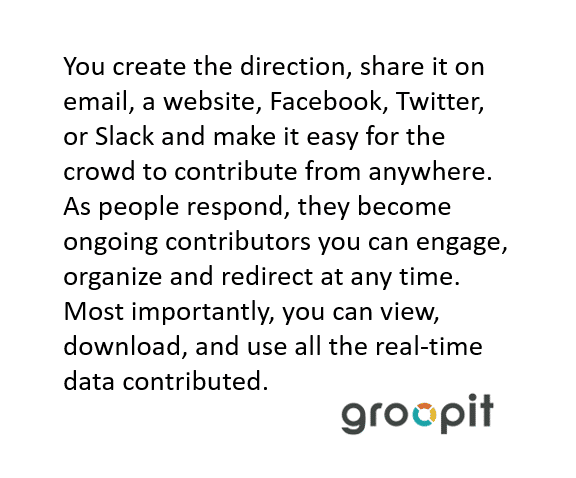Gathering information is commonplace. Sharing it in meaningful ways, is not. Yet, peak performance in business derives from how data is collected and shared.
Gartner analysts indicate that sharing data generates three times more measurable economic benefit than simply collecting data [1]. While leaders today have far more information, maximum success is best achieved when organizations move beyond ordinary data collection and implement real-time data sharing strategies.
The game changer: real-time data sharing
Operating in today’s business environment is complex work. As David Benjamin and David Komlos wrote in Fast Company, “the most significant challenges leaders face today are complex in nature. They are issues like doubling the growth of a business…The problem is that leaders try to solve these highly complex challenges as if they were merely complicated…”
The moment problem-solving involves a distributed or multi-discipline team, it escalates in complexity. In fact, 65% of leaders say the decisions they’re making today are more complex than two years ago [2]. Creating solutions takes leaders who are: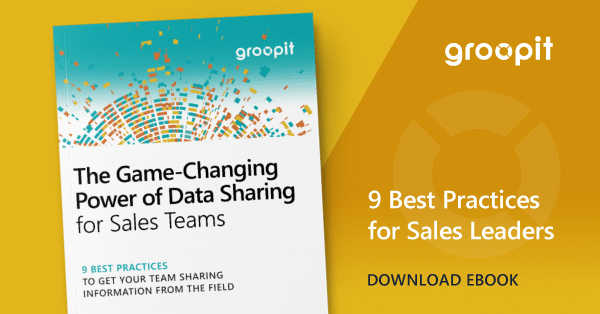
-
- Driven to get results.
- Make decisions based on data.
- Value frontline intelligence.
- Operationalize how data is shared.
With these attributes and the right approach to data sharing, there’s no problem too big to solve.
Sales teams get bogged down in collecting data
“With the proliferation of enterprise SaaS tools, leaders have more data than ever. But sharing the data and transforming it into actionable insights is still highly manual,” said Kirby Winfield, founding general partner of Ascend.VC.
If your organization is like most, account and opportunity data are collected in a CRM. However, solving the highest priority problems often requires information not captured or available through the CRM. So, every sales team is asked to provide additional data that is collected ad-hoc.
- Product leaders want to know about product gaps and feedback.
- Marketing wants to hear successes, stories, and positive quotes.
- Corporate strategy wants competitive intelligence.
- Operations wants to quantify sales process bottlenecks and inefficiencies.
- Sales leaders constantly research new information.
Frontline sales reps are bombarded with requests for information from all sides: one-on-ones, meetings, spreadsheets, surveys, emails, texts, phone calls, channels, town halls, and more. Some collection methods such as one-on-ones, yield high fidelity insights but are too time-consuming to scale while methods that scale, like surveys, do so at the expense of quality. So, leaders must employ multiple tools and systems to obtain the needed information.
The result: ad-hoc data chaos. While account and opportunity data is in the CRM, information collected ad-hoc is everywhere, nowhere, and seldom shared.
Customer-facing employees spend precious time capturing information ad-hoc for sales leaders, product, marketing, strategy, and operations teams. Team members complain about the pains of data collection. Leaders complain they cannot get the information needed. Everyone gets bogged down.
Consolidating data in a CRM will not solve this problem
The knee jerk reaction to this pain is to collect all data in one place – the CRM. But it won’t solve the problem. Why? Two reasons.
- CRMs are not designed with the flexibility, speed, and ease required to collect data ad-hoc.
- CRMs are also not designed for people to come together and solve complex problems.
CRM: Lack of data gathering flexibility
It’s the unexpected and unpredictable data that is collected ad-hoc. It is often needed now, but generally not necessary to collect indefinitely so altering the CRM seldom makes sense. CRMs are designed to track important account and opportunity data, consistently, over a long period of time to perform repetitive business processes like forecasting, project, and performance management. CRM’s do not provide an effective ad-hoc data collection workflow.
CRM: Lack team and cross-discipline visibility
CRMs are designed for collecting sales data, not for sharing data. Why does that matter? Because solving business problems involves a multitude of decision-makers, working at every altitude, across disciplines, locations, industries, and areas of expertise. Therefore, data cannot be siloed or buried in a discipline specific system. Every person must be empowered in their respective roles with data to inform their decisions. It’s an intricate web of decision-makers. CRMs do not provide an effective real-time data sharing workflow for such ecosystems.
But, as Maslow once said, if all you have is a hammer, everything looks like a nail. Instead of force fitting ad-hoc data into a CRM, streamline ad-hoc data collection and sharing into one lightweight workflow. Establish a simple practice to simplify data gathering that happens in meetings, spreadsheets, surveys, emails, texts, phone calls, channels, town halls, and more into one workflow. By establishing a best practice, a consistent habit of collection and sharing, you’ll make everyone more effective and efficient – especially while working cross discipline.
Leaders use data sharing to outperform
Strongly executed sharing can supercharge the modern organization. According to Gartner Analysts, businesses with shared ontology, semantics, governance and stewardship processes that enable inter-enterprise data sharing will outperform those that don’t by 2023 [3].
The concept that sharing data drives higher levels of organizational success is not new nor difficult to comprehend. The challenge is that complex situations has led to complex solutions. What’s been lacking is a way to simplify complex sharing — until now. Read on to learn about the seven best practices and the Groopit solution.
9 best practices to simplify and boost data sharing
Effective sharing begins by simplifying. Here’s how:
- Articulate it: Identify and articulate the complex problem that you are trying to solve.
- Define it: Remove ambiguity and define the information to be shared with you, the team, and cross discipline.
- Quote it: Use customer quotes to pass along info that might be considered bad news.
- Score it: Turn anecdotes into quantitative data by tracking topic frequency & sentiment.
- Time it: Streamline the data capturing process so it takes less than one minute.
- Share it: Share data gathered automatically, immediately, and in a consumable format.
- Model it: Enlist champions to actively share and model quality sharing.
- Recognize it: Recognize the value of shared data and the people sharing it.
- Integrate it: Integrate data shared into existing workflows resulting in the right information shared more often.
For example, if the business problem you have articulated is outsmart the competition, asking employees to merely share #competitiveintelligence is not enough. Instead, precisely define which competitor intel to share: strengths, weaknesses, pricing information, product details, marketing intelligence, sales strategies, or entirely different data.
Once outlined, go one level deeper. If it’s competitor strengths you seek, express it with high specificity: [competitor strength quote] + [topic] + [source] + [conviction level score – low, medium, high, or extreme] = competitor strength.
Now, the sharing of competitive intelligence can be streamlined to capture it in three taps or less than one minute (time it) and automatically shared.  Effective sharing requires the distribution of raw data — each piece of competitive intelligence — to everyone involved; allowing them to scan a feed and immediately use the intel to inform their own decision-making.
Effective sharing requires the distribution of raw data — each piece of competitive intelligence — to everyone involved; allowing them to scan a feed and immediately use the intel to inform their own decision-making.
Best practices seven and eight are essential to building momentum. In this example, companies enlist people to model good competitive intelligence sharing and recognize quality contributions and business impact – like how it helped win a competitive deal. If your team primarily works in Slack, Teams or Salesforce, Groopit integrations makes the workflow seamless.
To learn more about these nine best practices, download the eBook.
Data must be shared – rapidly, constantly, and with everyone involved
The question then, becomes, how?
According to Ascend.VC’s Winfield, “Groopit is the first company we have seen to meaningfully address…where data meets collaboration. Tools like Excel, Smartsheets, Airtable present data, while tools like Slack and Teams share information. Groopit bridges this gap, providing the ability to share real-time data across teams and organizations.”
Let’s look at a completely unrelated example of complexity: Traffic.
Drivers are the quintessential decision makers. They’re driving their own routes, simultaneously making independent and unpredictable decisions. Traffic is constantly changing and outsmarting it is complex. Waze (Yes, the traffic navigation app!) established a completely new, game-changing approach.
First, Waze defined the data drivers should share: traffic jams, police sightings, accidents, and hazards.
Second, Waze made data sharing automatic so every driver could immediately see what’s happening and use the data to make informed decisions.
As a result, drivers can outsmart traffic. They’re empowered with data that is highly accurate because it is collected in real-time and highly valuable because it is immediately shared with all drivers.
Leaders can apply this same approach to solving complex problems with Groopit.
First, leaders define the information employees share. Your parallel to the traffic accident might be sales wins, product gaps, competitive intelligence or more. Groopit is so easy to customize, examples are abundant.
Second, Groopit makes data collection fast, easy, and automatically shared so everyone involved is empowered with real-time data to inform their own decisions.
As a result, loosely connected people can work in concert to solve a problem.
Groopit unlocks the power of data sharing
Though gathering information was commonplace prior to Groopit, meaningfully and effectively sharing it certainly was not. Yet, the key to problem solving remains how data is collected and shared.
Today, Groopit makes the complex simple. Groopit goes beyond data gathering to streamline the collection process and enable enterprise-wide, real-time data sharing. Schedule a demo to see the simplicity: Groopit Demo.
With Groopit, data sharing is easy and instantaneous — building scaffolding with information to connect and empower decision-makers at all altitudes across all functional areas.
So, the key question is this: what data do you want the frontline to share? What are your parallels to the traffic accident? Get inspired here or set up a free problem-solving consultation with Groopit. We’ll spend forty-five minutes asking questions to understand what you’re trying to accomplish so we can apply Groopit’s expertise and define your unique version of the traffic accident.
Build your organization’s problem-solving capability with Groopit
Leaders, Groopit will help you tackle your most complex problems with data from the frontline. Here’s the critical point: as you do it, you’ll also build an organizational capability to solve any problem – a long-lasting capability that will pay off time and again. You and your team will establish the habits, practices, and systems to handle whatever comes your way.

Learn more about combining the power of data collection and real-time data sharing with Groopit.
Frequently Asked Questions
What is the key to getting your sales team to share data with sales managers, a marketing team, product teams, and beyond?
The act of sharing should be integrated into their existing workflow and sales process. Make is easy for sales reps to capture customer data, like their feedback about a product, from within the existing sales cycle workflow. Groopit makes it easy to capture new data from within Slack, Teams, Salesforce, any web page or a Groopit mobile app, combines it with existing data stores, and simultaneously shares the data with everyone involved.
Which types of teams benefit when sales reps share real-time data?
Many teams benefit. Data driven sales teams are already capturing important information. The key is to decide what information should be shared in real-time, so the surrounding disciplines can more effectively support the sales process.
A collaborative sales team continually shares customer quotes and insights with the marketing team, so they can more effectively build awareness and generate marketing qualified leads.
An effective sales team also provides real-time input into product strategy. By sharing product feature gaps raised by customers, in-the-moment and as an integral part of the sales cycle, product teams can use the customer data from sales reps to continually inform product priorities and execution.
The benefit of frontline sellers sharing real-time data goes beyond product, sales and marketing teams. Sales reps can share sales inefficiencies, assisting sales operations in understanding bottlenecks and optimizing the sales process. Sales reps can share wins, huddle updates and sales data online, so sales managers know exactly who is following through on their accountabilities.
When a data driven sales team move beyond capturing sales data and toward sharing intelligence, multiple disciplines will be able to work in concert to increase sales.
What are examples of customer data that are valuable to share?
On data driven sales teams, frontline sales reps typically gather valuable customer data such as wins, successes, requests, quotes, and sales data that can help drive organizational growth when shared.
In addition, sales and marketing teams benefit from bottoms up sharing of information such as competitive intelligence that help them greatly improve their sales process.
What is a benefit of sharing data?
Sharing data gets information out of silos and into the hands of those who need it most — sales reps, the sales team, or even company executives — in real-time. This customer data and other valuable pieces of existing information can expand sales data and help employees at every altitude in the organization and across functional areas make informed decisions.
What is data sharing in a sales team or organization?
Data sharing is getting existing data — such as customer data, sales data, or perhaps research on the sales cycle — out of specific functional areas and shared enterprise-wide to drive informed decision-making at all levels of an organization.
How do sales leaders use Groopit to accelerate sales and revenue?
Sales reps can easily track field activity such as site visits, merchandise visits and account management meeting while data driven sales teams can best manage their pipelines by using Groopit to track wins, improve sales huddle productivity or share pipeline math and everyone on the team can track product launch activity by capturing launch statistics on demos, posts, and events or consumer reactions and/or objections.
Sales team leaders use Groopit to share many types of sales data: customer intelligence, competitive intelligence, field activity, pipeline management, sales process improvements and product launches.
Examples of customer intelligence might be positive quotes, success stories, product requests, questions and pain points while weaknesses, pricing details, positioning, sales activity and marketing activity are examples of competitive intelligence.
What is the benefit of using data from multiple teams?
Using data from multiple teams is imperative because solving complex business problems involves a multitude of decision-makers, working at different altitudes, across disciplines, locations, industries, and areas of expertise. Moving sales data and customer data out of silos and sharing it across an organization empowers employees in their respective roles with data to best inform their decisions.
What does it mean to gather data and common techniques?
Collecting data is often achieved by asking sales team members to share their frontline customer data experience to best inform decision making in other functional areas. Many organizations use techniques such as one-on-ones, meetings, spreadsheets, surveys, emails, texts, phone calls, channels, town halls, and more to gather information with varying degrees of success. Leaders must currently employ multiple tools and data management platforms to obtain the needed information resulting in ad-hoc customer data chaos.
